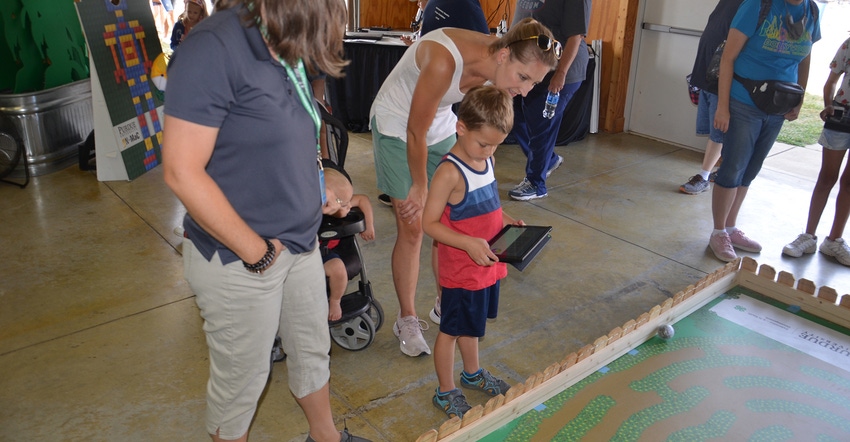August 30, 2021

Mac Reynolds Barn at the Indiana State Fair was transformed this year. Reynolds Farm Equipment, Fishers, Ind., turned the building over to Indiana 4-H for an interactive project.
Families filled the building. Kids watched 3-D printers at work. Others progressed down a table full of Legos with specific instructions for building certain kinds of models. Still others interacted with a table covered with tiny electronic, robot-like pieces. Still more kids used tablets to control rolling robot spheres on the floor.
Rachel Haselby insists there was far more than just playing going on. Haselby is a computer science specialist for youth development with Indiana 4-H and Extension. She explains that the equipment and concepts that kids were trying out were developed in cooperation with the Indiana Manufacturing Competitiveness Center, or IN-MaC, a group within the Polytechnic Institutue at Purdue University.
Two sets of materials were combined into one display. Now that the fair is over, one set will be housed in Indianapolis. The other set will be available for use elsewhere. The goal is to have these types of materials available for elementary schools, Haselby notes.
“Students of today need these types of computer and engineering skills,” she explains. “The goal is to introduce these concepts now. The materials are designed so we can meet a student where they are in terms of learning and help them develop from there.”
Adult volunteers are needed to help guide students as they use these materials. If you’re interested in volunteering, let your local Extension staff know, Haselby says. They can link you with state staff members for more details.
The 4-H of tomorrow?
Earlier this summer, I noted that it’s uncertain what types of 4-H projects will be displayed at county fairs in another 10 years. Except for livestock exhibits, 4-H project numbers seem to be dwindling in most counties.
“What we’re doing with this STEM-based material can be part of 4-H, whether it’s through a 4-H Spark club or a county computer science project,” Haselby says. “Many traditional projects taught 4-H members skills they needed for employment. This curriculum is teaching skills they need for employment today and tomorrow.”
Haselby isn’t advocating against traditional 4-H. She’s simply stating reality. Perhaps more counties should consider adopting some form of computer science project. Maybe integrating computer science-based projects with traditional ones is the solution some counties seek.
Perhaps in 2030, a 4-H member will display an object made with a 3-D printer. Or maybe they’ll display a website they developed. The challenge is finding funding to make these ideas reality.
There is a statewide computer science project now, Haselby says. However, 4-H’ers display a folder of their work at the state fair. You can see these folders if you ask.
That won’t cut it if the goal is getting more people excited about computer science-based projects. It may take an investment in computers to display websites through grants, state funding or county funding.
How to make these types of projects work is a separate question than “Should we do it?” If incorporating these types of projects makes sense and continues the tradition of teaching employable skills through 4-H, smart people in every county can make it happen.
Should you do it? That’s a debate worth having in every county.
Comments? Email [email protected].
You May Also Like




